Back in 1981, a young diver called Kihachiro Aratake was scouting for dive sites around the coast of remote Japanese island, Yonaguni, when he came across something that took his breath away. “An underwater Machu Picchu!” Three decades, several books and a countless documentaries later, divers are still arguing about the origins of the Yonaguni Monument.
Is it an ancient monument, the remains of a legendary city like Atlantis, swallowed by the ocean thousands of years ago? Was it built by aliens? Or is it a natural rock formation?
So naturally, it’s the first thing I want to see when I arrive here. I want to see for myself. The Monument, or Ruins as it’s sometimes called, is located close to shore and while it’s a shallow dive at 10 to 15 metres, the area is sometimes subject to strong currents, but luckily conditions are perfect and we are able to visit the dive site on our first day of diving.
The entrance to the site is through a small tunnel that opens out onto a flat square area. Right in front of you are two massive columns, perfectly square with sharp edges, stretching up to the water’s surface. From here you follow a flat ‘road’ around the tall walls of the monument to an area that looks like a terrace.
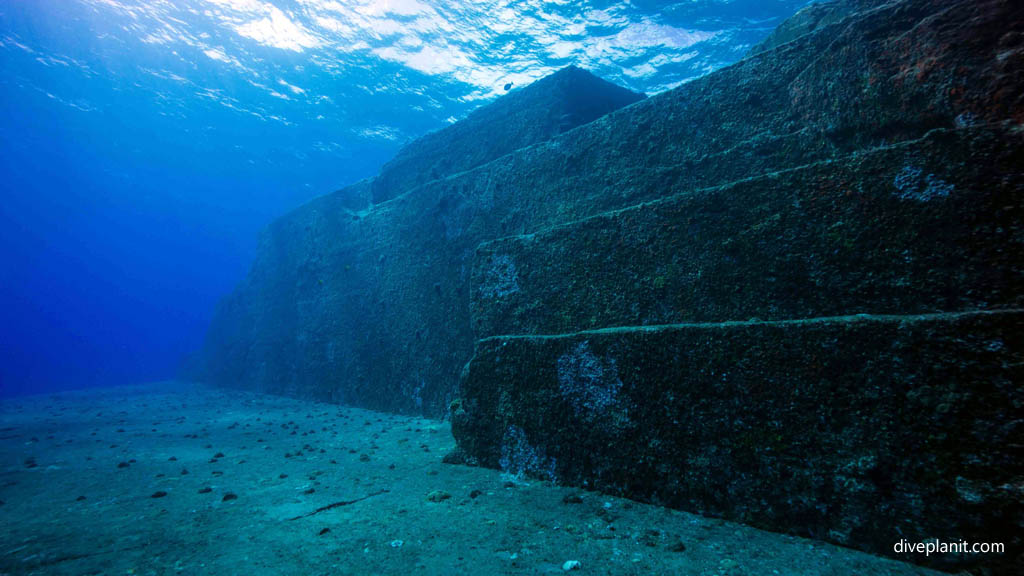
There are large steps leading up to the terrace, and more steps leading on to higher levels of the structure. At the edge of the stage, the walls drop down around 20 metres, and you can just imagine crowds standing below this stage, looking up at some kind of spectacle.
Past the stage there is a deep triangular alcove, which Aratake believes to have been some kind of chapel or alter. Our guide Shorty (Aratake’s son) points out that it faces exactly due north and there is a large slab of rock placed just before the apex, almost like a sacrificial alter.
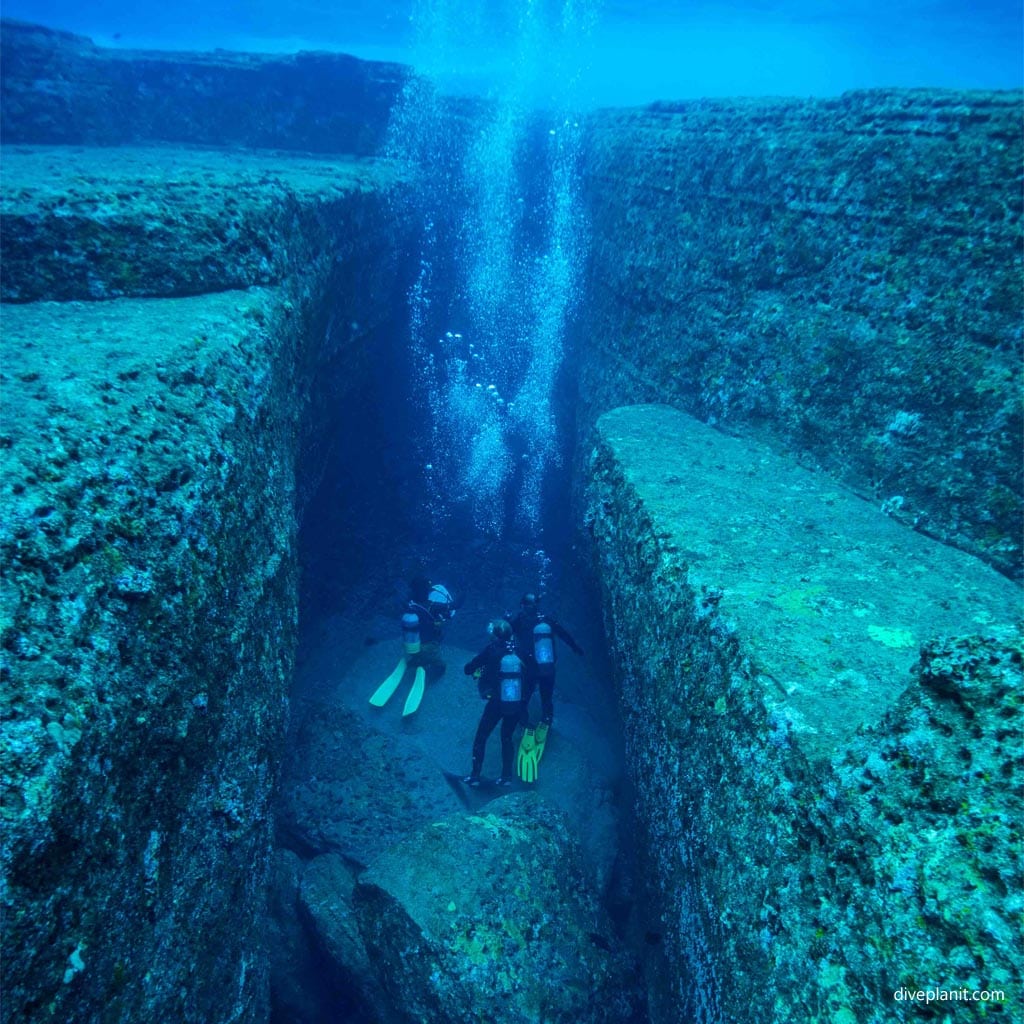
A little further along is another almost symmetrical structure, that looks like a giant turtle. Could this have been a god-like creature that the ancients worshipped?
I must admit, it’s pretty convincing. The straight edges of the steps and stage are at perfect 90-degree angles – how could these have been formed naturally?
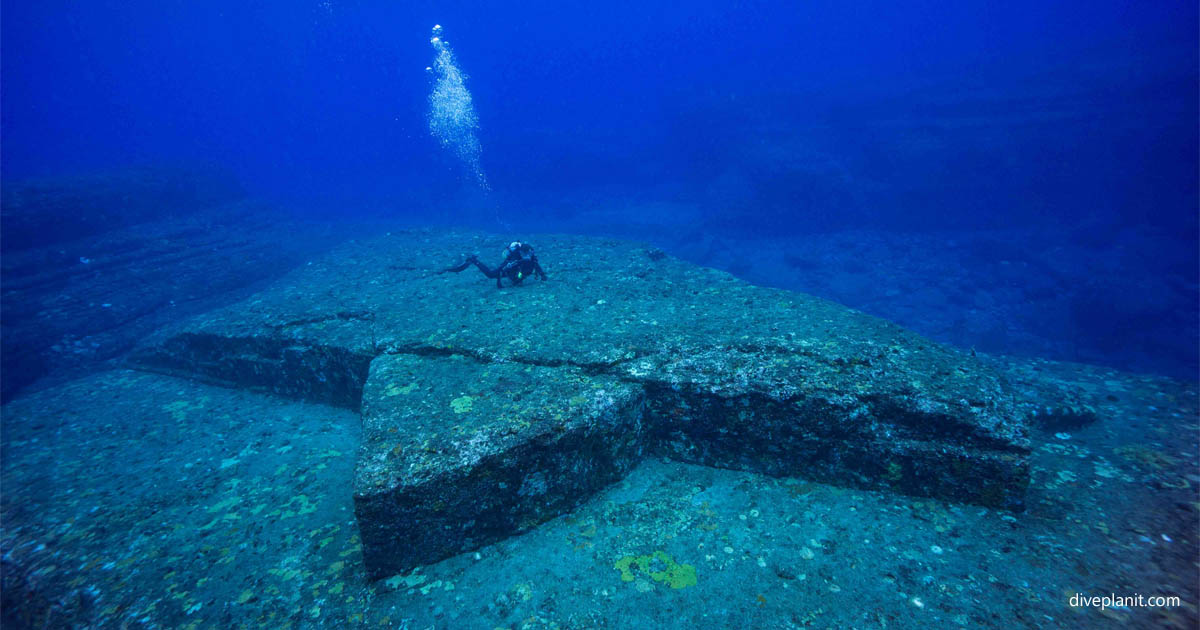
Geologists argue that the rock formations are sedimentary – sandstone. Archaeologists claim that the monument was carved out of stone (sandstone is relatively easy to carve, isn’t it?). But if this monument was built on land and then swallowed by the sea, it must have happened over 10,000 years ago, the last time sea levels rose. Which means it predates the Egyptian Pyramids and megalithic structures such as Stonehenge by about 5000 years.
Whether or not you believe this is a man-made structure or a natural rock formation, it’s still an incredible sight to see, and it’s not the only amazing dive site here in Yonaguni. The water is so clear here, with visibility between 50 to 60 metres, divers (and turtles) look like they are flying.
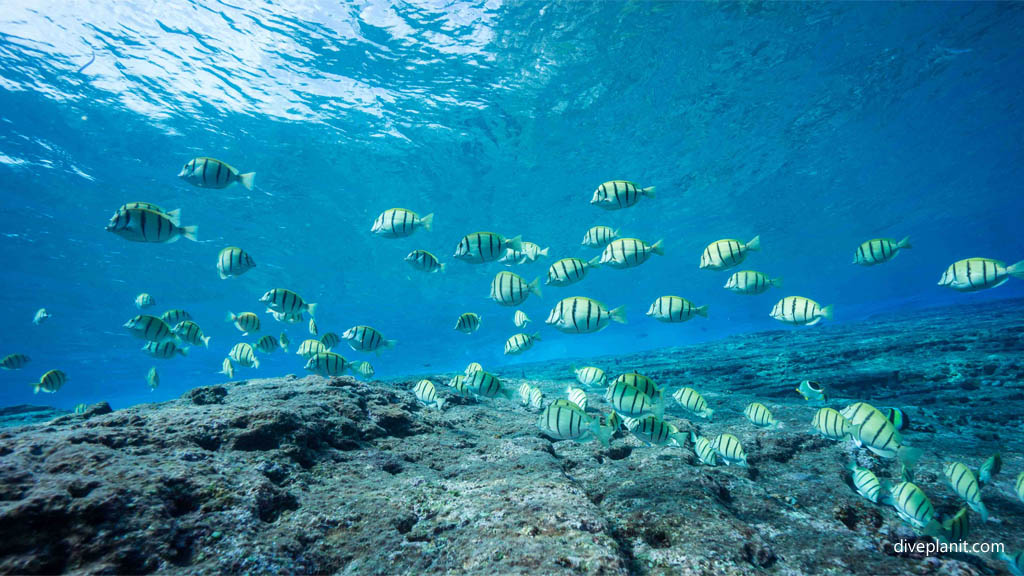
There are 67 surveyed dive sites here, many with beautiful caverns and caves to explore, pristine coral reefs and many striking features, such as this meadow of orange anemones. And better still, even in November the water temperature is 29 degrees, thanks to a warm current tan runs up the east coast of Taiwan. There’s plenty of marine life here too, everything from brightly coloured anemone fish, to turtles, rays, and in season, huge schools of hammerhead sharks.
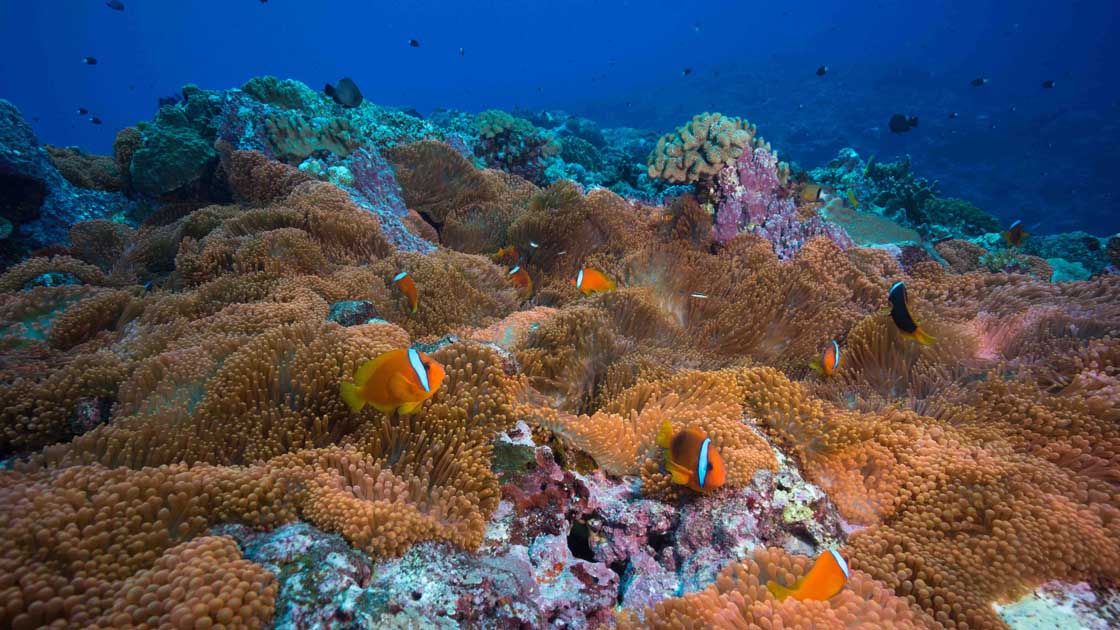




So reminds me of my visit to Cusco and Macchu Picchu…such large close fitting shaped rocks or even more so of stepped Mayan temples.
It’s the steps that got me – each the same height, and perfectly straight. And those two columns!